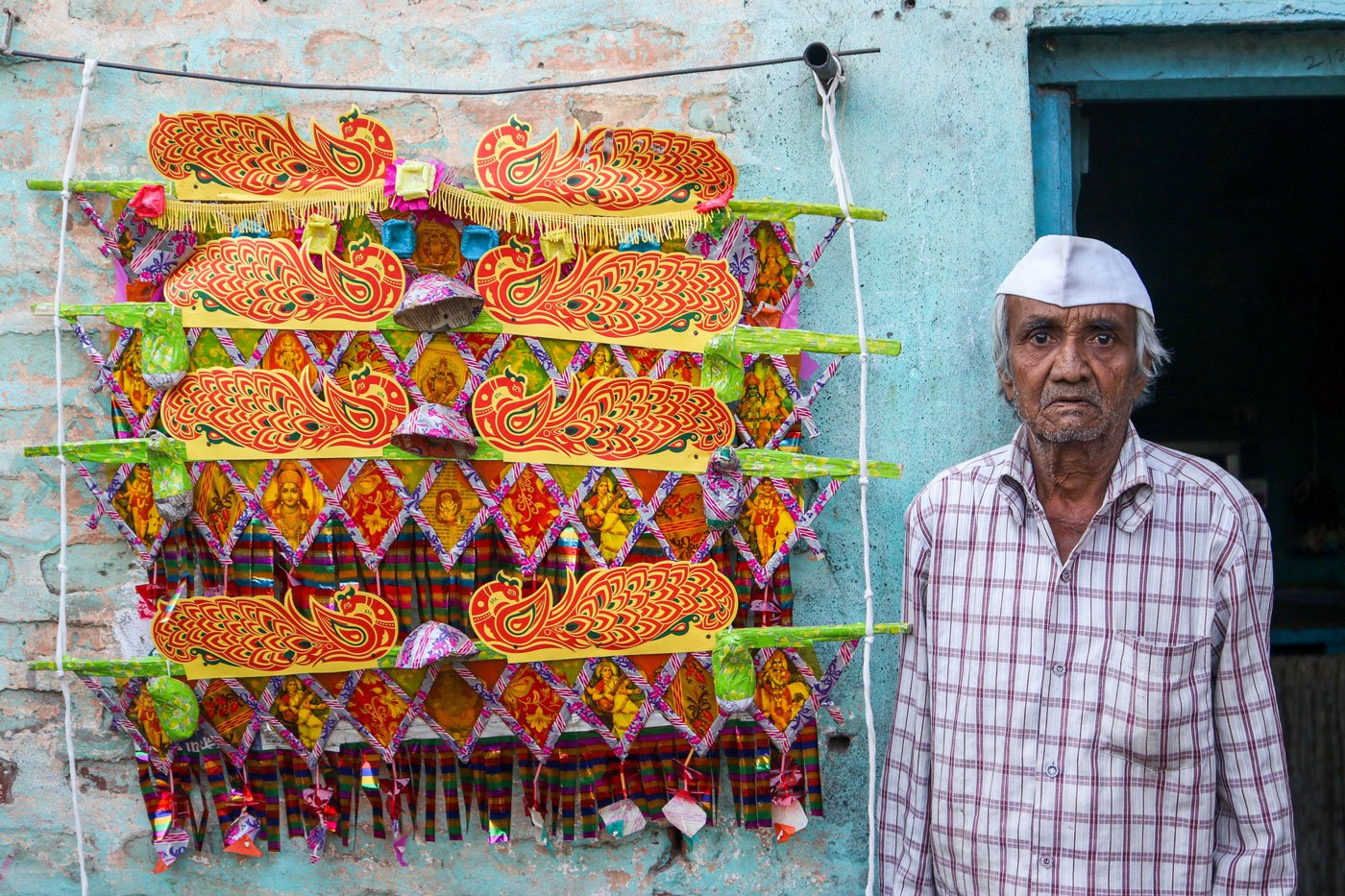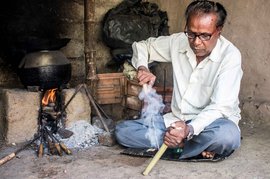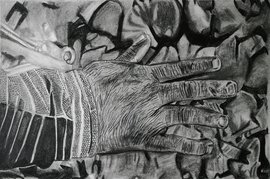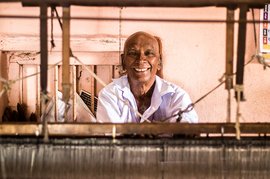When Muralidhar Jawahire sits down to work, there is no space for error or distraction. His hands move rapidly and in silence, connecting the joints of a toran , tying them together with a coarse cotton thread. The frail frame of the 70-year-old belies the solid concentration that he brings to the bamboo frames he crafts nearly every day.
In the workspace outside his turquoise mud and brick house in Maharashtra’s Ichalkaranji town, his work materials are scattered around – bamboo sticks, colourful papers, gelatine paper, old newspapers and more. These will, in a few hours, be turned into intricate torans – garland-like decorations used to adorn the door frames of houses and temples.
Muralidhar’s wrinkled palms swiftly cut a cross-section of a bamboo stick into 30 pieces of equal size. He then turns these into nine equilateral triangles relying entirely on his intuitive sense of measurement. The triangles are attached to bamboo sticks that are 3 or 10 feet long.
From time to time, Muralidhar dips his fingers into a dented aluminium bowl that contains khal , a type of gum made from crushed tamarind seeds. His wife Shobha, who is in her early 60s, has made it that morning.
“He won’t even say a word while working, and no one can interrupt him,” she says.
While Muralidhar continues silently making the bamboo frames, Shobha prepares for the decoration tasks that follow – she weaves circular pieces of colourful gelatine paper into a tassel. “Whenever I get free from household chores, I start doing it. But this work is a strain on the eyes,” she says.
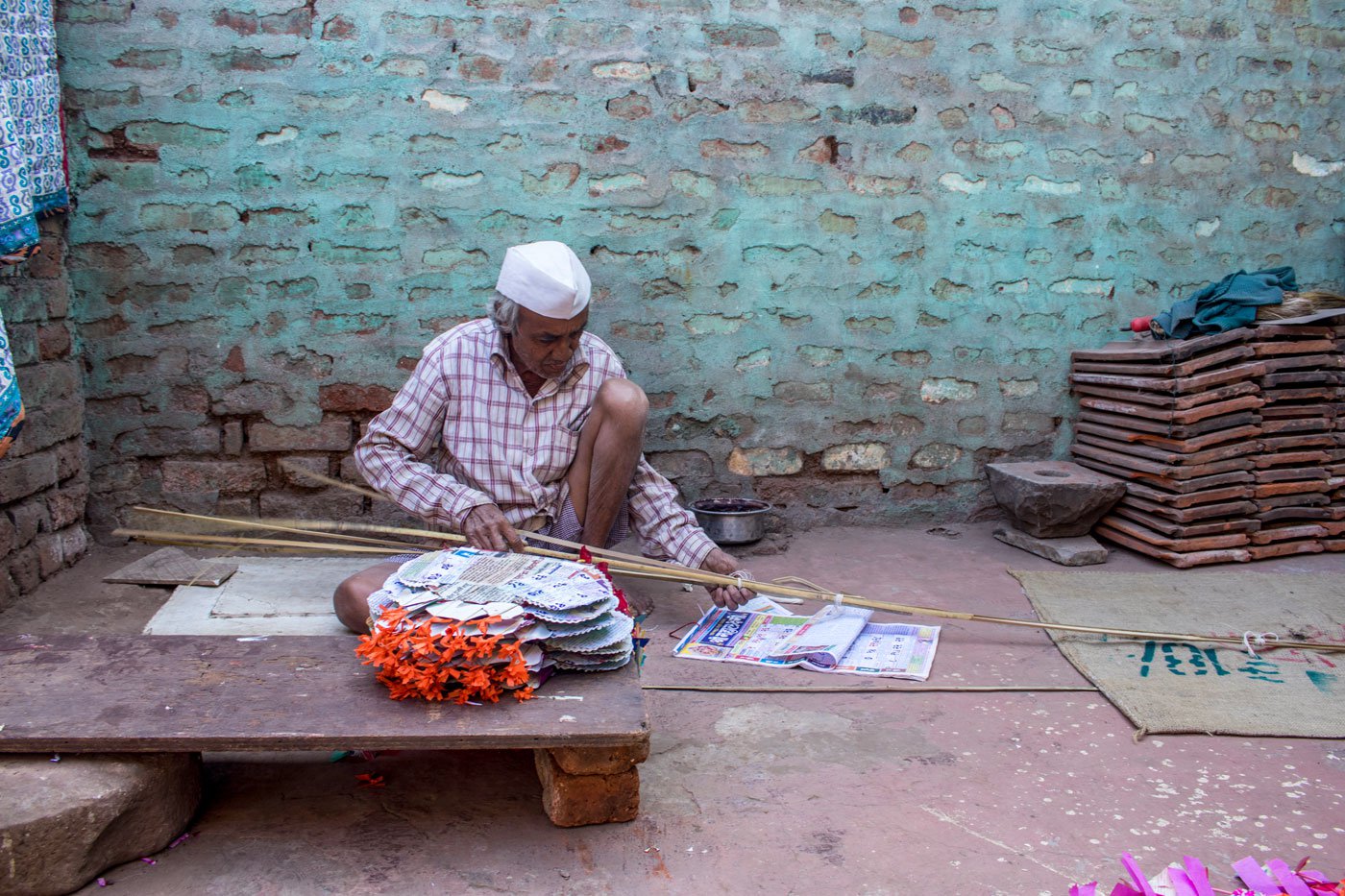
The frame-making process begins with Muralidhar Jawahire cutting cross-sections of an 18 feet long bamboo stick
The tamarind seeds she uses for the gum cost Rs. 40 per payli (five kilograms), and she uses 2-3 payli every year. To decorate the torans , the Jawahires maintain a stock of over 100 mini-umbrellas, coconuts and raghu (parrots), all made from old newspapers. “We used to make these at home, but now due to age we buy them from the market,” Shobha explains. “For 90 pieces of coconut and raghu we pay a total of 100 rupees.” Once the frame is ready, Muralidhar starts assembling its design.
The Jawahire family has been making these toran s across generations, for over a century. “I heard from my father that our kala [art] is at least 150 years old,” Muralidhar says, with evident pride. His family belongs to the Tambat community (listed as an OBC in Maharashtra) and were traditionally engaged in making torans , repairing taps and tin-coating brass and copper vessels.
His father would fit the chavi (taps on copper or brass pots), repair bambs (traditional water heaters), and kalai the vessels (the process of tin-coating brass and copper vessels). But the skill of kalai, he says, vanished two decades ago. “Who uses brass and copper vessels now? It’s just steel and plastic now, which don’t require kalai. ”
And his family, he says, is the last one in Kolhapur district’s Ichalkaranji town still making the traditional hand-crafted torans : “We are the only ones who make these now,” down from around at least 10 families doing this works work some decades ago. Today, he adds, “No one comes to even ask about this art form. Forget about learning it.”
Still, he has ensured the quality remains constant. “ Kahich badal nahi. Tich quality, toch namuna ,” he says – there’s no change. It’s the same quality and the same template.
Muralidhar was around 10 when he began making torans, learning by watching his father. It “takes several decades of practice” he says, to create toran designs without a single geometric tool. “A true artist doesn’t need a scale,” he adds. “None of us used any measuring devices. We don’t need to measure. It’s all from memory.”
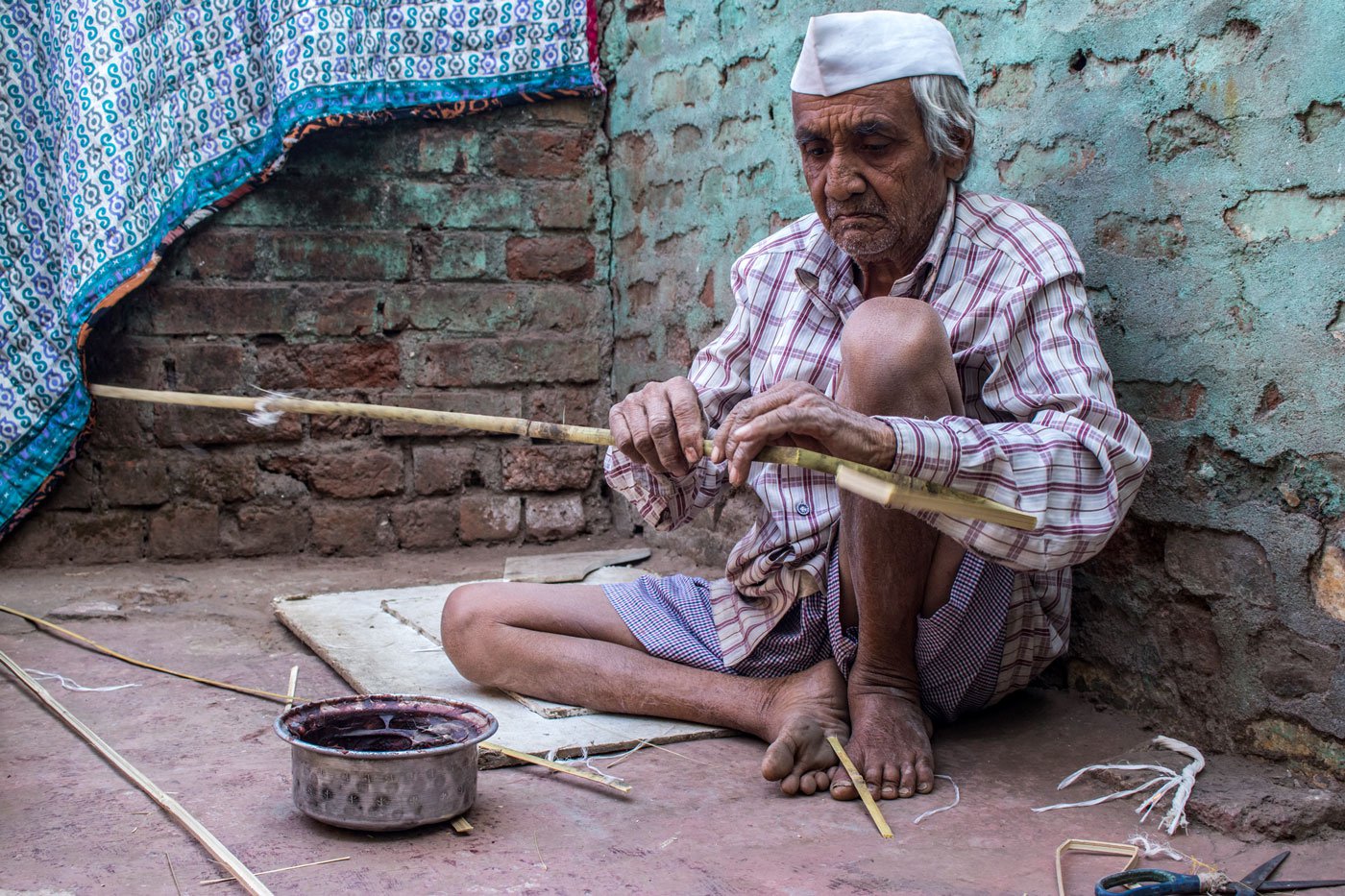
Before further slicing the stick, Muralidhar moulds and shapes the bamboo by twisting it in a few places
There are no written records of the design either. “ Kashala pahije ?” Why would one need templates? “But it requires precision and skill,” he adds. When starting out, he would make mistakes, but now takes a mere 20 minutes to handmake a bamboo truss.
On the frame he is working on that day, he ties a paper umbrella, then fastens two yellow peacock prints. He has bought these from Kolhapur city, 28 kilometres away. Muralidhar and Shobha then place photos of Hindu gods and goddesses in alternate triangular frames. These are bought in bulk, either from Nipani in Karnataka or Kolhapur city. “If we can’t find a photo, I look for old calendars, wedding cards and newspapers – and use cut-outs,” Muralidhar says. There is no fixed number of photos to be used. “It’s the artist’s call,” he adds. The photos are later covered with bright, translucent gelatine sheets.
The rest of the frame is then decorated with printed coloured paper sheets. Each roughly 33x46 inch sheet costs Rs. 3. Muralidhar uses velvet paper for better quality torans . Two paper parrots are tied at the lower end of the truss-frame, and beneath every triangle a paper coconut wrapped in golden foil is hung along with the gelatine tassels.
“It takes about five hours for a 10 feet toran,” Muralidhar says. But he does not follow a fixed work schedule anymore. “ Aao jao, ghar tumhara [You come, you go, it’s your own house],” he quotes a Hindi proverb to say that he is free to pursue his work as and when he feels like doing it.
The schedule may now be flexible, but the precision remains unchanged. After hours of painstaking work, he is proud that there is no waste in this art. “Look at the modern torans made only of plastic and other harmful materials. They are all bad for the paryavaran [environment].”
The torans are all between three and 10 feet long – the shorter ones are the most in demand. These are sold at prices ranging from Rs. 130 to Rs. 1,200. In the late 1990s, these used to fetch him between Rs. 30 and Rs. 300 each.
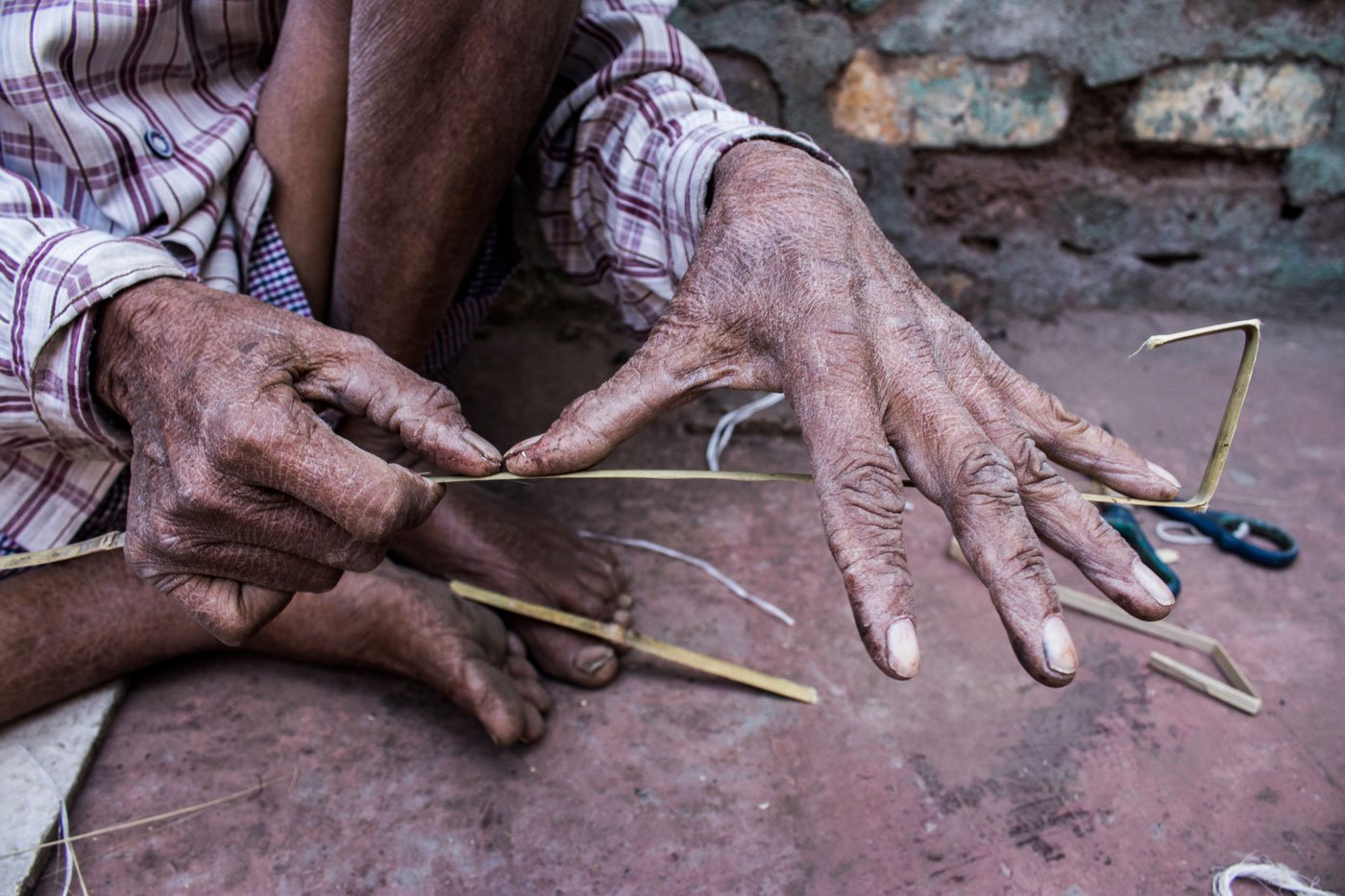
Muralidhar cuts 30 pieces of equal size, and then turns these into nine equilateral triangles relying entirely on his intuitive sense of measurement
Muralidhar also makes elaborate bashinga , a crown-like ornament worn on the forehead by both bride and groom during wedding ceremonies. It is also offered to local deities during jatras (village fairs). It takes him 90 minutes to make a pair of paper bashinga , which sells for Rs 150. The numbers he sells depend on orders and season. Every Diwali, the Jawahires also handmake lanterns using bamboo and decorative paper.
“Since it’s a part of rituals, the demand for bashinga hasn’t come down,” Muralidhar says. “But people buy torans only on festivals and occasions like Diwali, marriage, vastu .”
Muralidhar has never sold his artwork to any vyapari (trader), who he feels don’t do justice to his skills. “They hardly pay us Rs. 60 or 70 [for the three-feet torans ]. We don’t get enough profit, nor do they pay us on time,” he says. He prefers selling directly to customers who come to his house to buy.
But the plastic alternatives available in the market have impacted the survival of his craft. They are cheaper and easier to make, he says, and his average monthly income is barely Rs. 5,000-6,000. The Covid-19 pandemic and lockdowns have added to his struggle. “I haven’t got a single order in months. Last year in the lockdown, no one came to buy a toran for five months,” he says
Muralidhar recalls the plague of 1994 when his entire family left their house. “We went out to the [open] field because of the mahamari [epidemic] and now everyone is asked to stay at home because of corona. How times change,” he says.
Times have indeed changed. Unlike Muralidhar, who learnt his skills from his father, his own children are not interested in the intricacies of making torans . “They’ve not even touched the khal [tamarind gum],” he says. “What will they understand about this art?” His sons Yogesh, 36, and Mahesh, 34, work as labourers on lathe machines, while daughter Yogita, 32, is a homemaker.
After around six decades of hard work making torans that have decorated many doorways and bashinga that have adorned many a forehead, Muralidhar doesn’t have anyone to pass his legacy on to. “We have now become scrap,” he says with a smile.
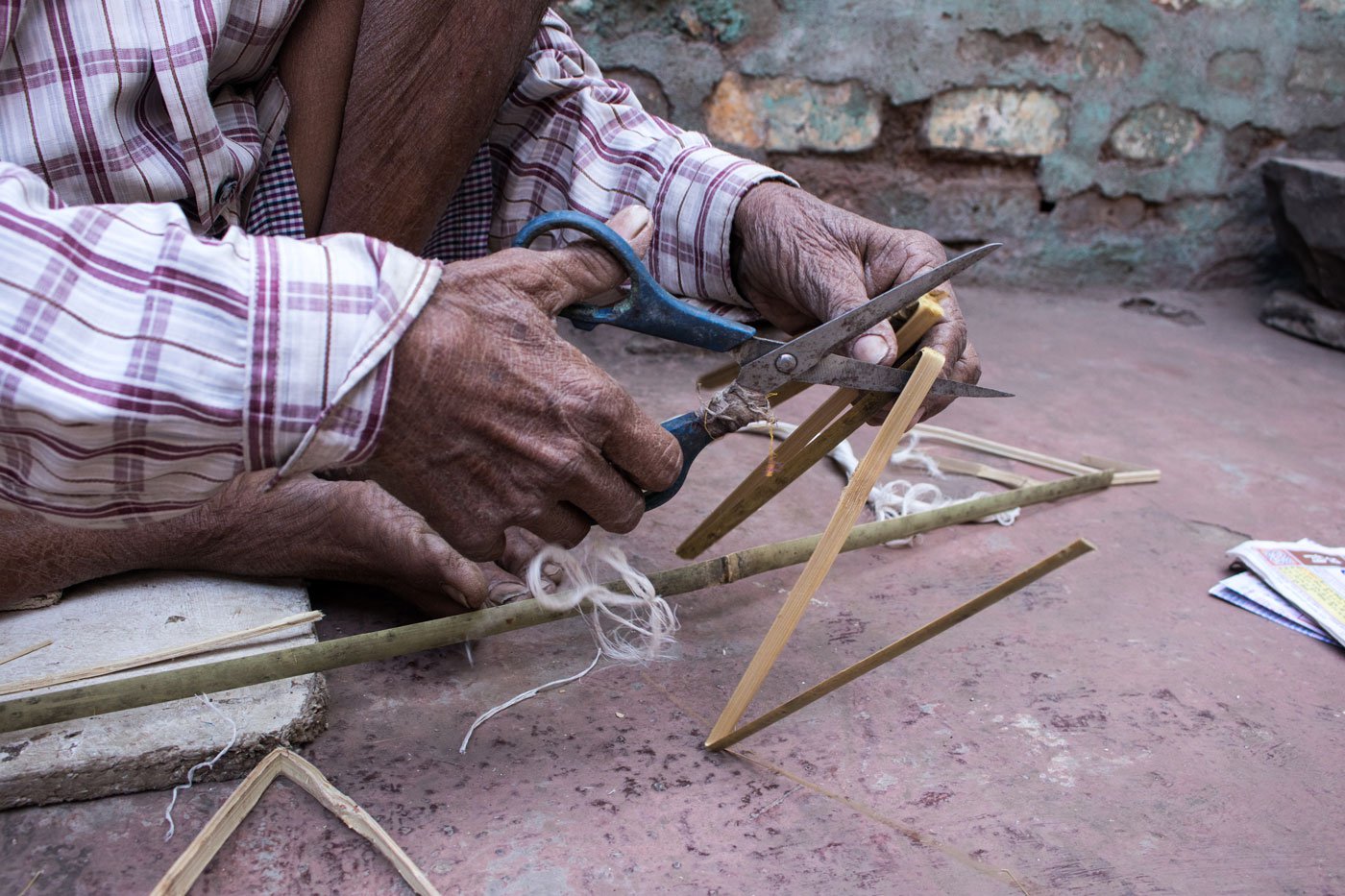
He then starts cutting the pieces with scissors: 'None of us used any measuring devices. We don’t need to measure. It’s all from memory'
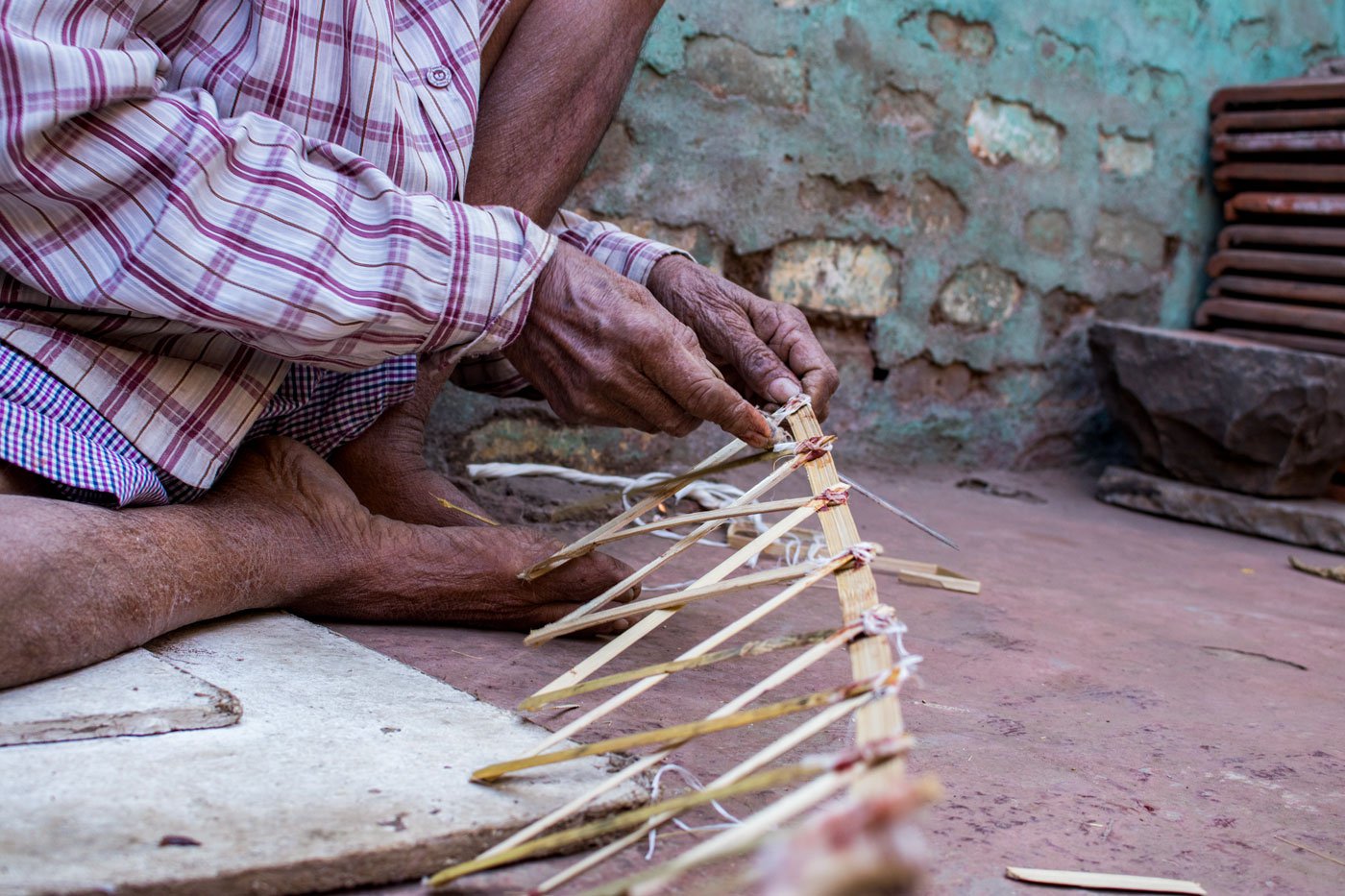
To make sure the triangular frames remain intact, Muralidhar ties the sticks at the connecting points with a coarse cotton thread
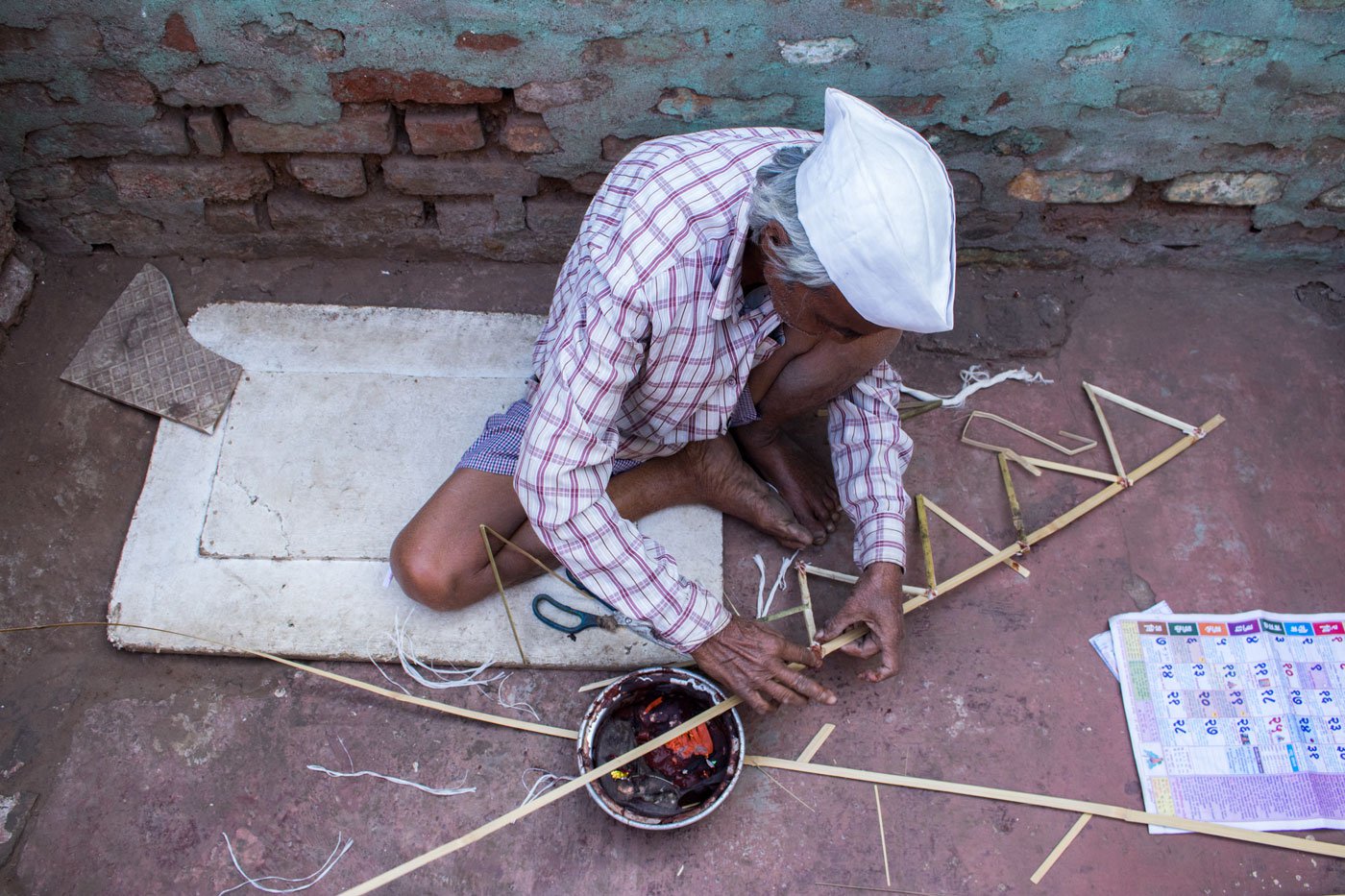
From time to time, Muralidhar dips his fingers into an old aluminium bowl that contains khal
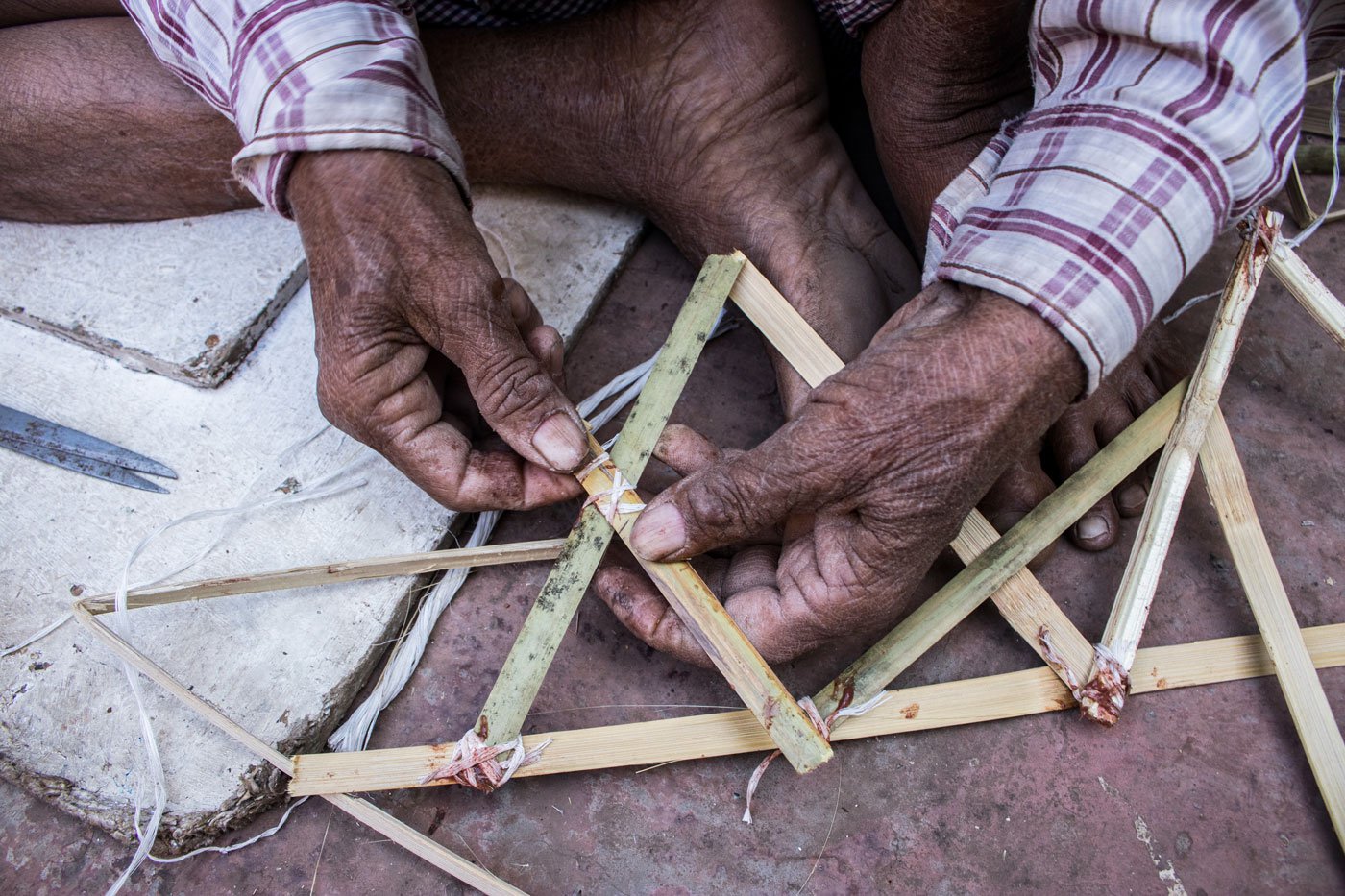
To ensure the frames don’t distort, Muralidhar applies the khal – a type of gum made from the flour of the crushed tamarind seeds
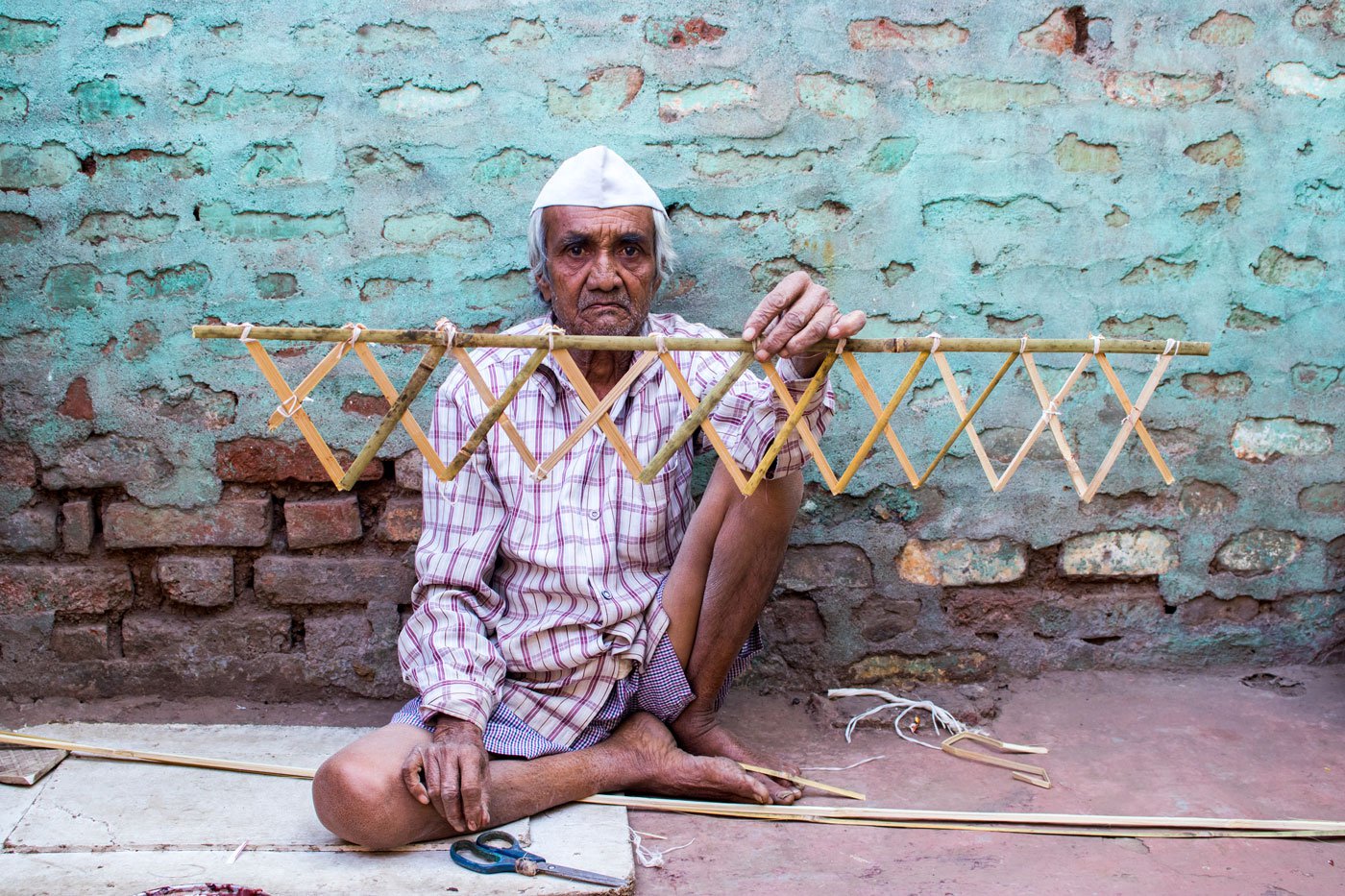
He takes a mere 20 minutes to handmake one bamboo truss-frame, which is then nailed onto a thick bamboo stick
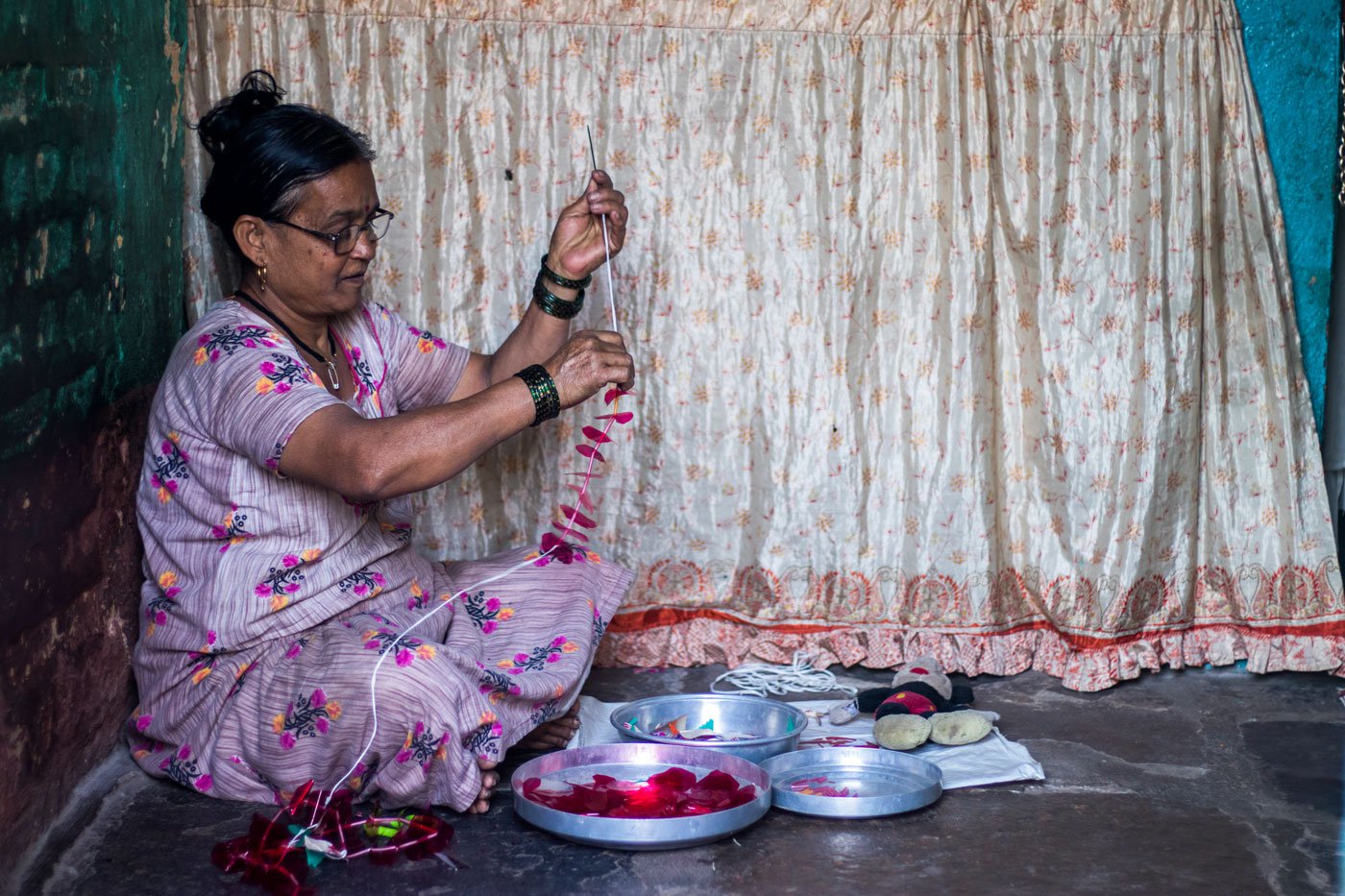
Shobha started doing her tasks on the handmade torans after she and Muralidhar got married – it is his family's occupation
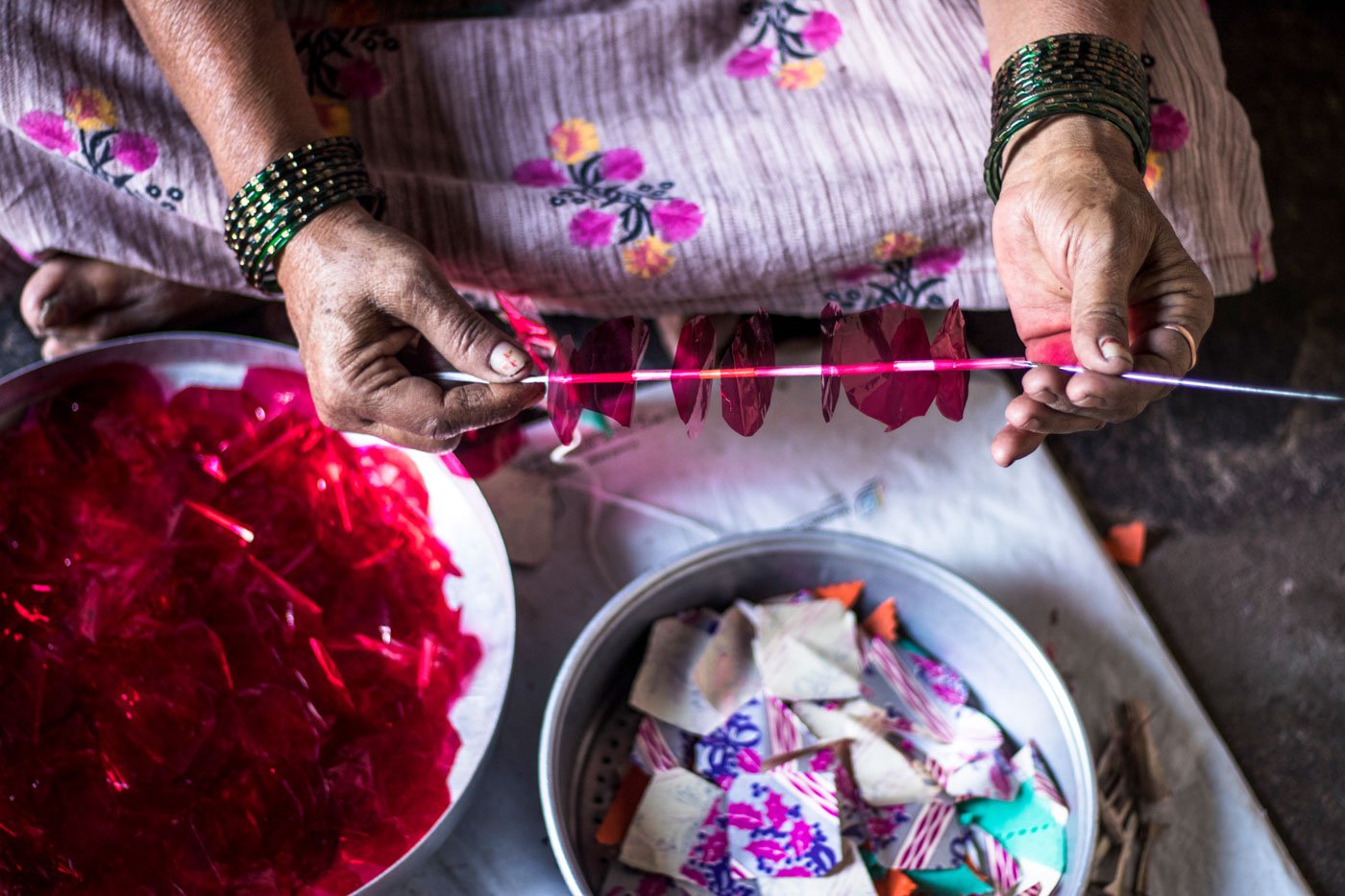
After completing housework, Shobha starts weaving gelatine sheets into paper tassels
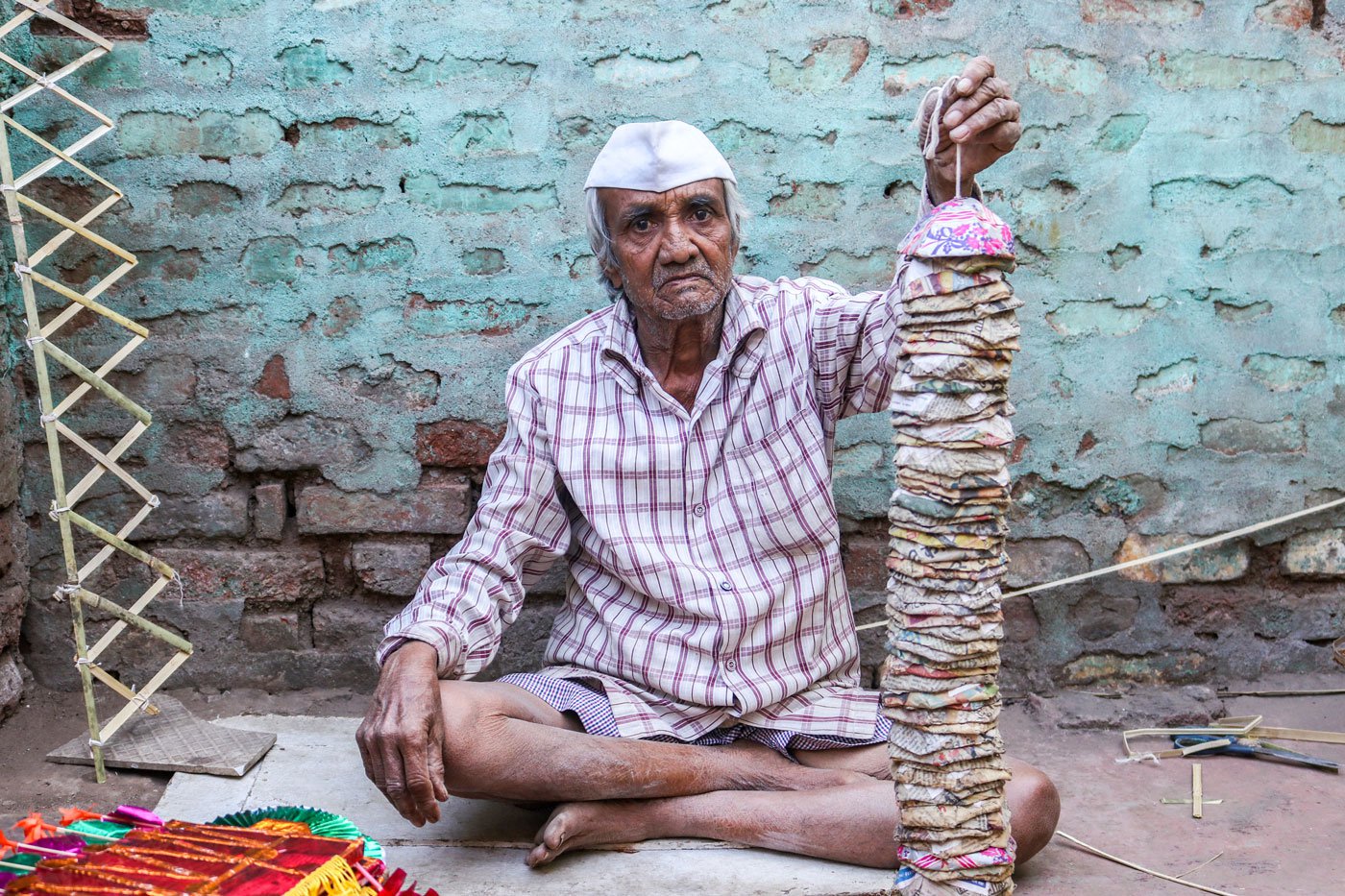
Muralidhar and Shobha have stocked over a 100 paper 'umbrellas', which are used as a decorative element for the toran
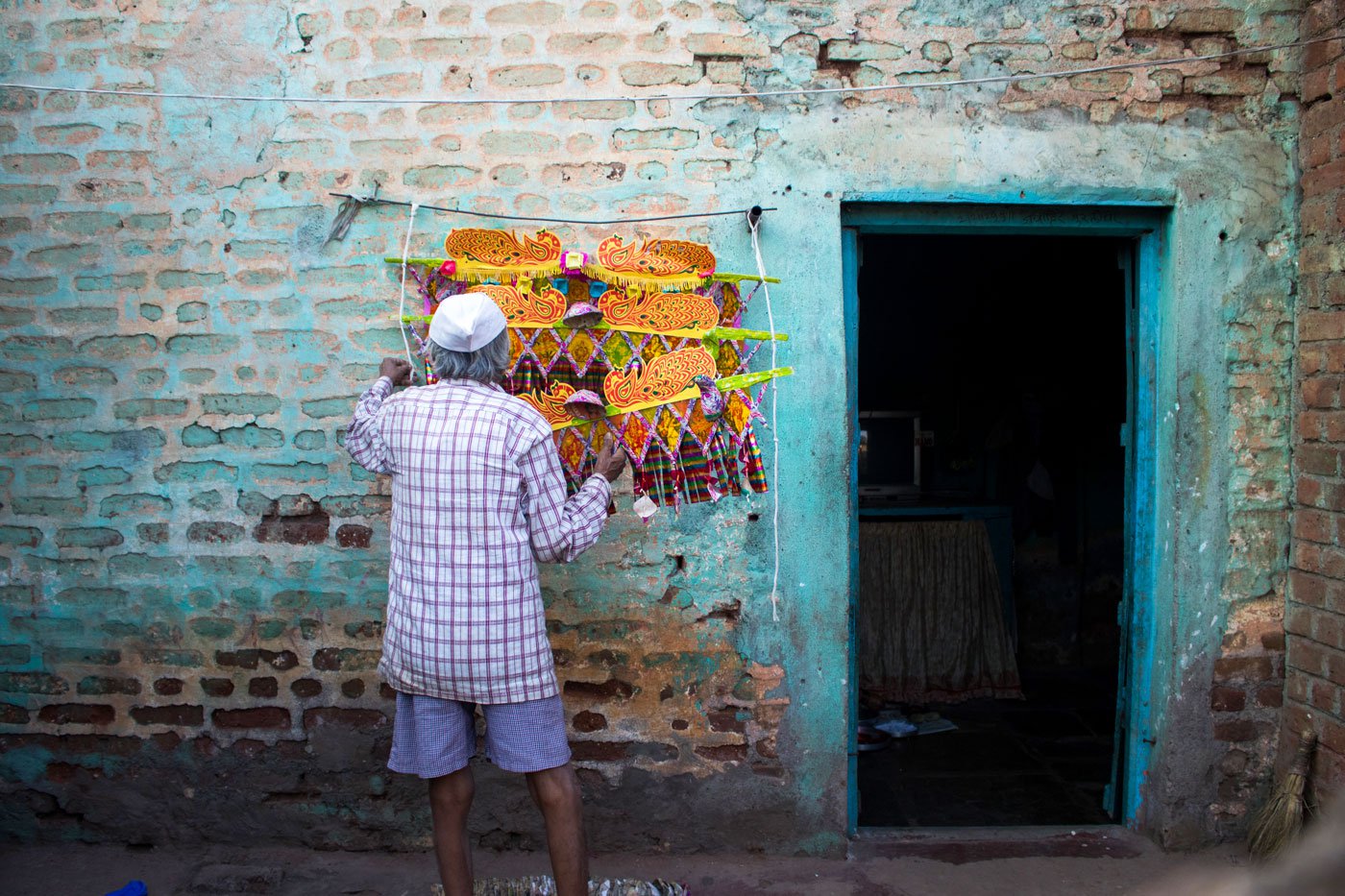
Muralidhar displays the toran in his compound – hoping people will buy it
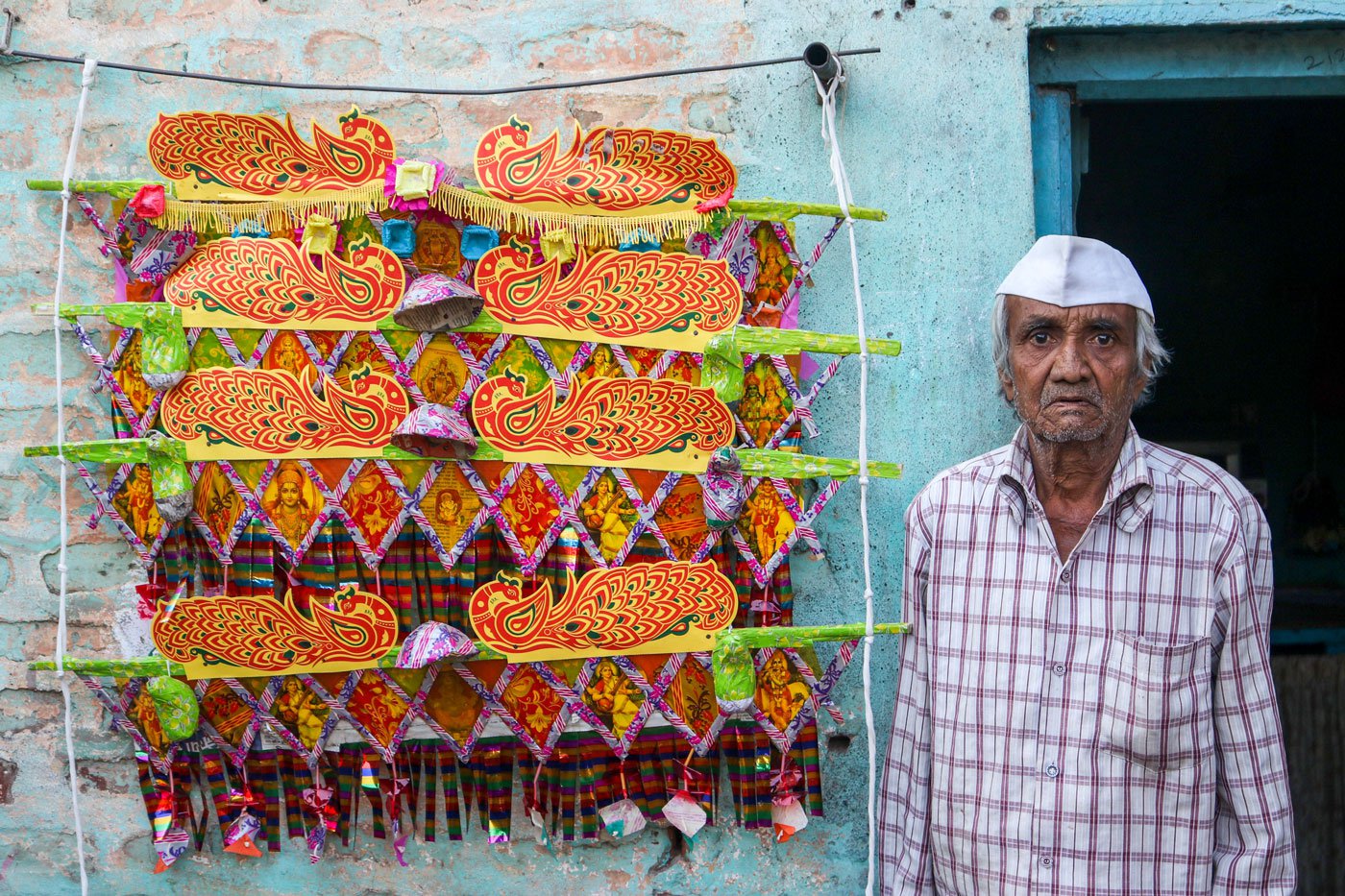
Unlike Muralidhar, who learnt his skills from his father, his own children are not interested in the intricacies of hand-making torans
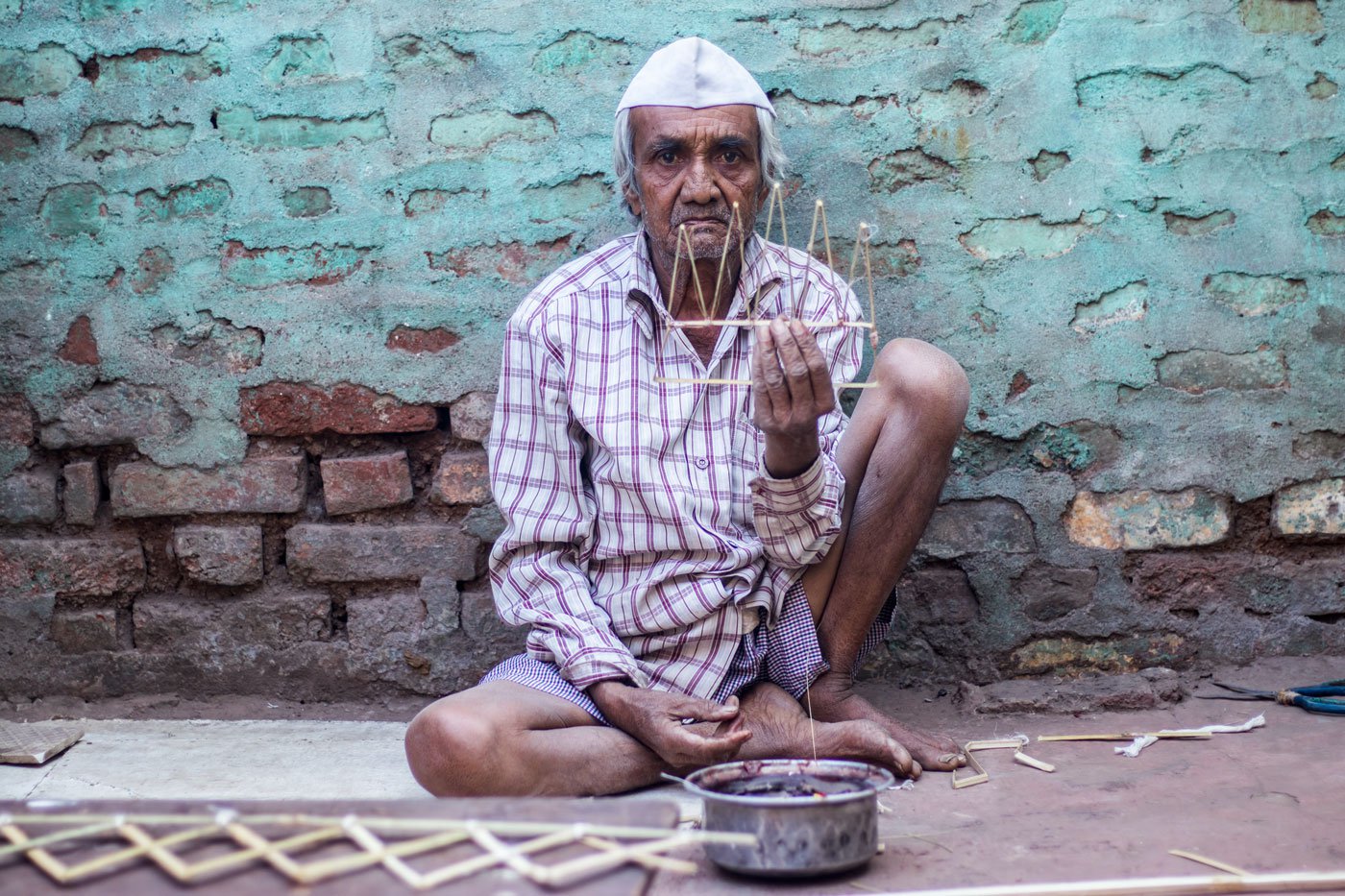
The Jawahires also make bashinga, a crown-like ornament worn on the forehead by both bride and groom during wedding ceremonies
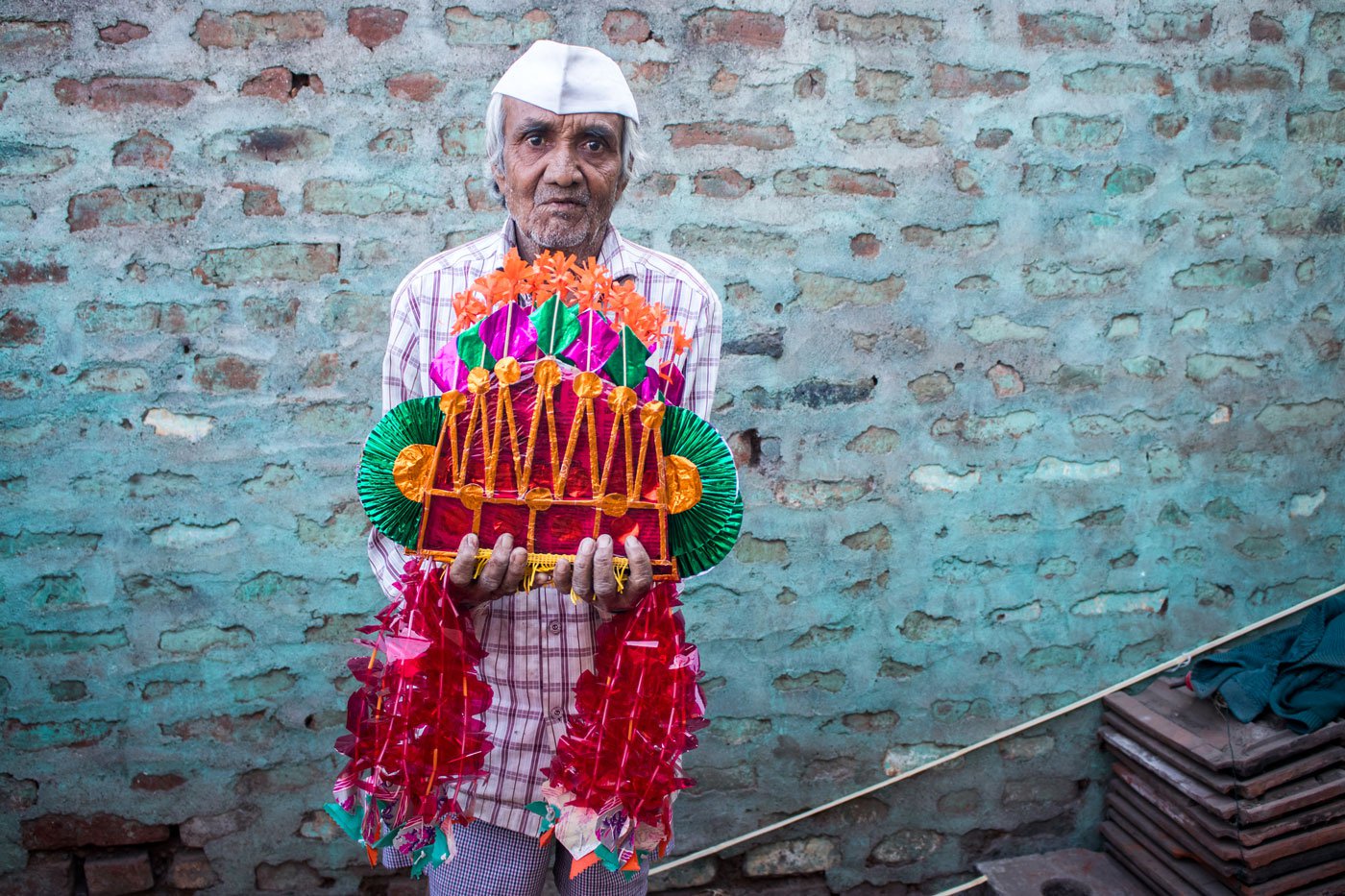
It takes him 90 minutes to make a set of paper bashinga, which sells for Rs. 150. The numbers he sells depend on orders and season
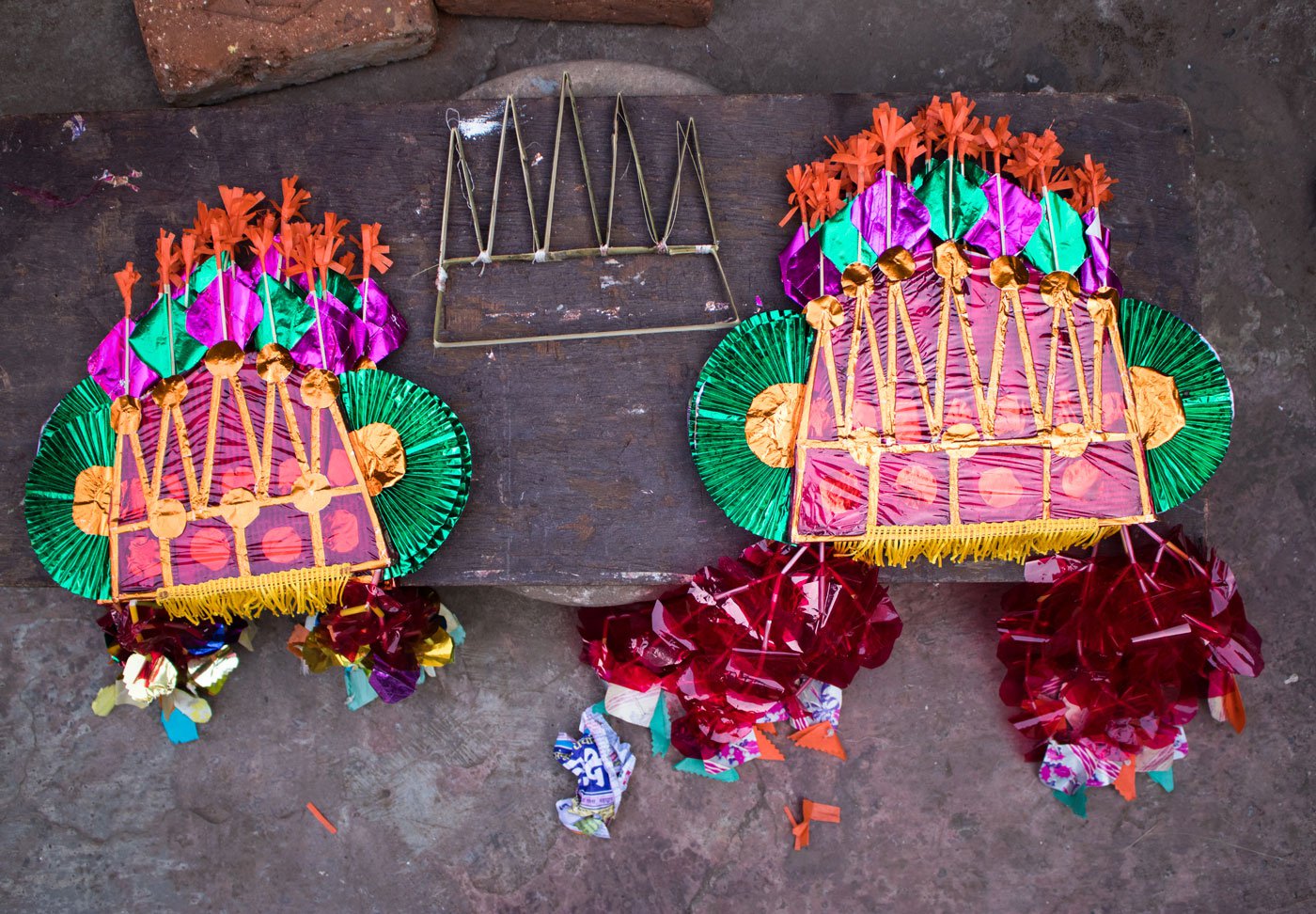
The bashinga is is also offered to local deities during jatras (village fairs). But after around six decades of hard work making these intricate items, Muralidhar doesn’t have anyone to pass his legacy on to
This story is part of a series of 25 articles on livelihoods under lockdown, supported by the Business and Community Foundation.
